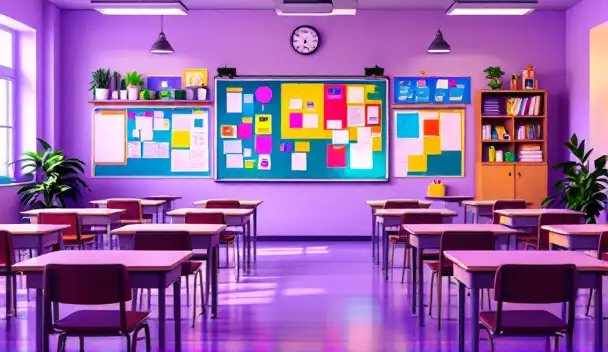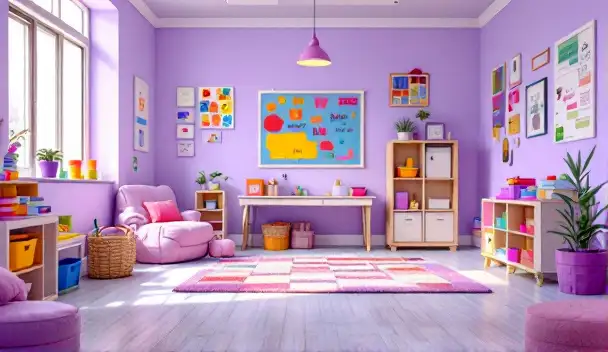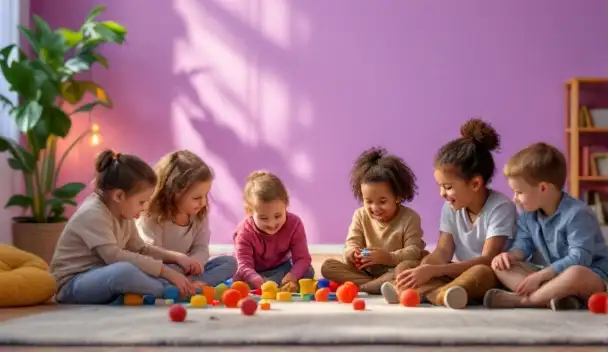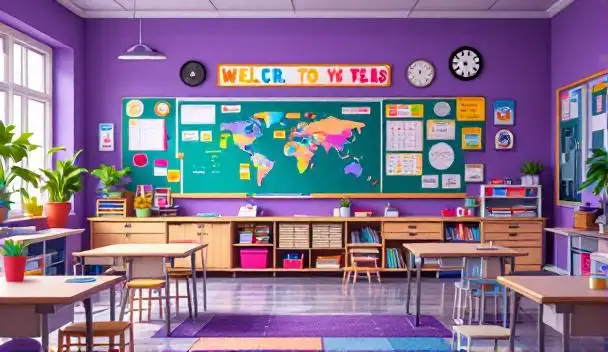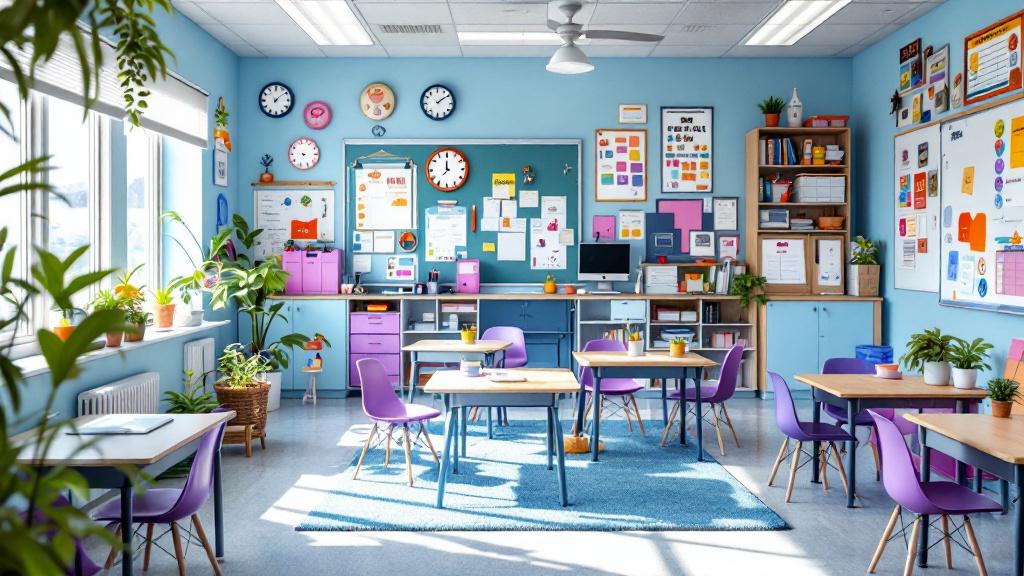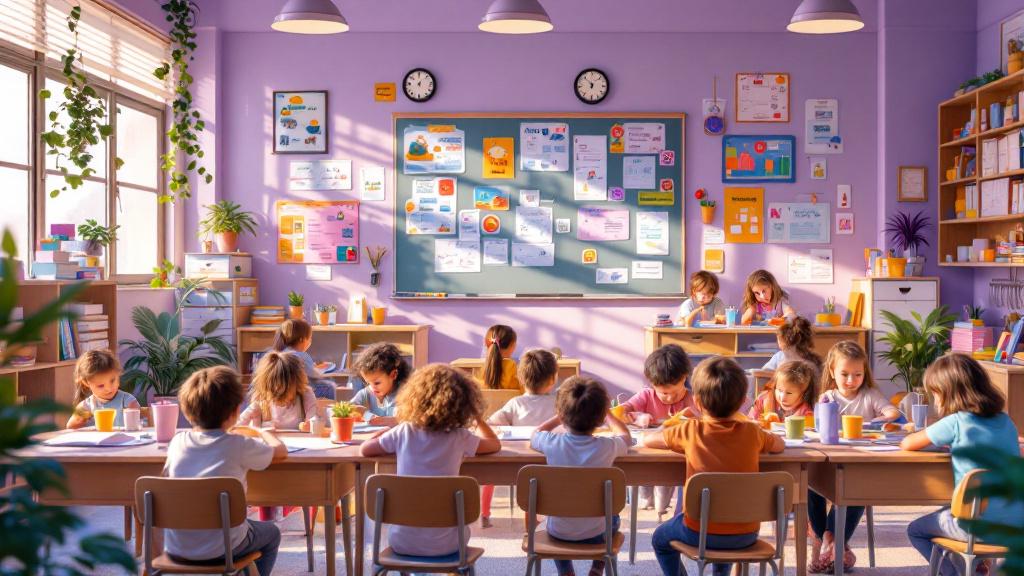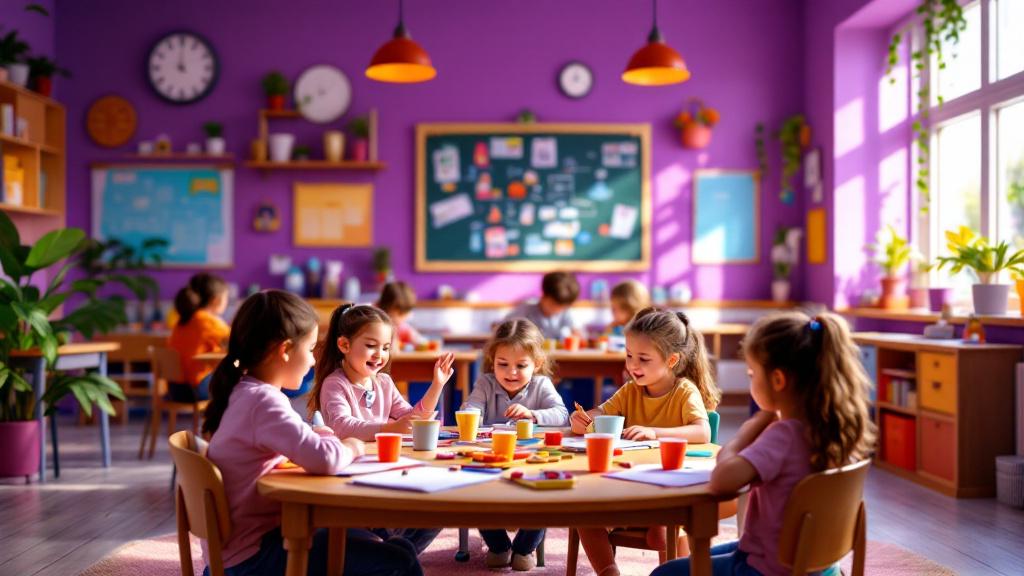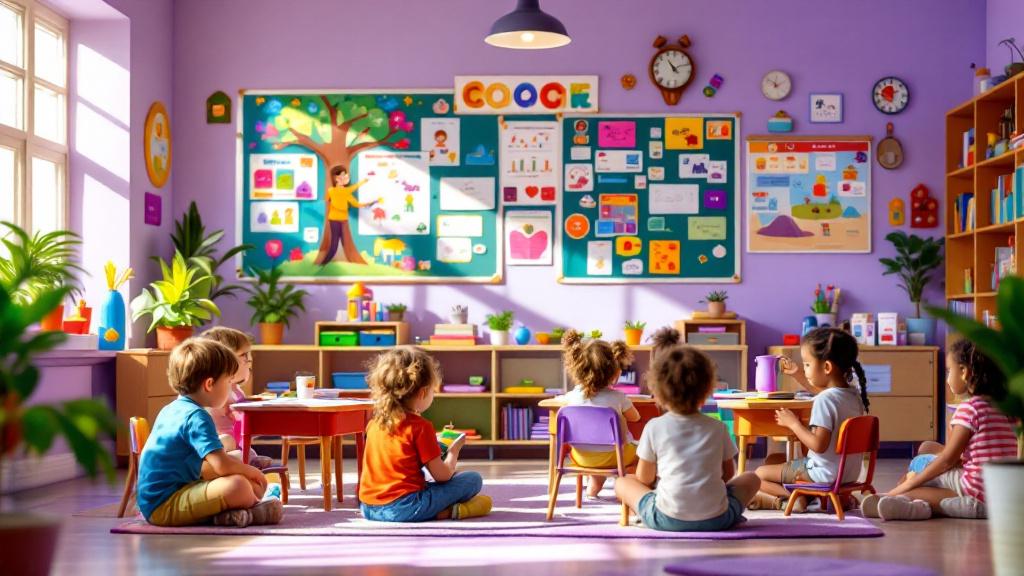An Introduction to ABA and Its Role in Education
Applied Behaviour Analysis (ABA) is a scientifically grounded therapeutic approach widely used to support children with autism spectrum disorder (ASD). Its principles and strategies have been effectively incorporated into educational settings to enhance a child's learning, communication, social skills, and independence. As an evidence-based practice, ABA not only addresses behavioral challenges but also builds foundational academic skills, ensuring children are prepared for school success and ongoing development.
Core Techniques of ABA That Promote Learning

How does ABA therapy support the development of academic skills in children with autism spectrum disorder (ASD)?
ABA therapy plays a crucial role in fostering academic skills by utilizing structured and proven methods. Techniques like Discrete Trial Training (DTT) enable children to learn foundational skills such as reading, writing, and math through small, manageable steps.
DTT involves breaking down complex skills into simple, teachable units. Each unit is presented in a structured trial with immediate feedback and reinforcement, which helps children understand expectations and develop habits for task completion.
Natural Environment Teaching (NET) is another vital approach, where skills are taught through real-life activities and everyday routines. This method helps children generalize learned skills across various settings, making their learning more practical and applicable.
Task analysis complements these techniques by subdividing overall academic tasks into smaller components. For example, learning to tie shoelaces or solve a math problem involves step-by-step instruction, gradually increasing in complexity.
Positive reinforcement is used consistently to motivate children. Rewards such as praise, stickers, or extra play time encourage children to demonstrate desired behaviors and persist in learning activities.
Prompting and fading are strategies that guide children toward correct responses. Visual cues or verbal hints are initially provided, then gradually reduced as the child gains independence.
Implementing these techniques requires careful data collection and analysis. Monitoring progress helps in adjusting interventions to match each child's unique needs and ensure continuous development.
Finally, ABA assessments like the ABLLS-R and PEAK help identify specific skill deficits and strengths, guiding customized instruction plans. These efforts lead to improved language, social, and academic skills, laying a solid foundation for school success.
Enhancing Communication, Social Skills, and Self-Regulation for Academic Success
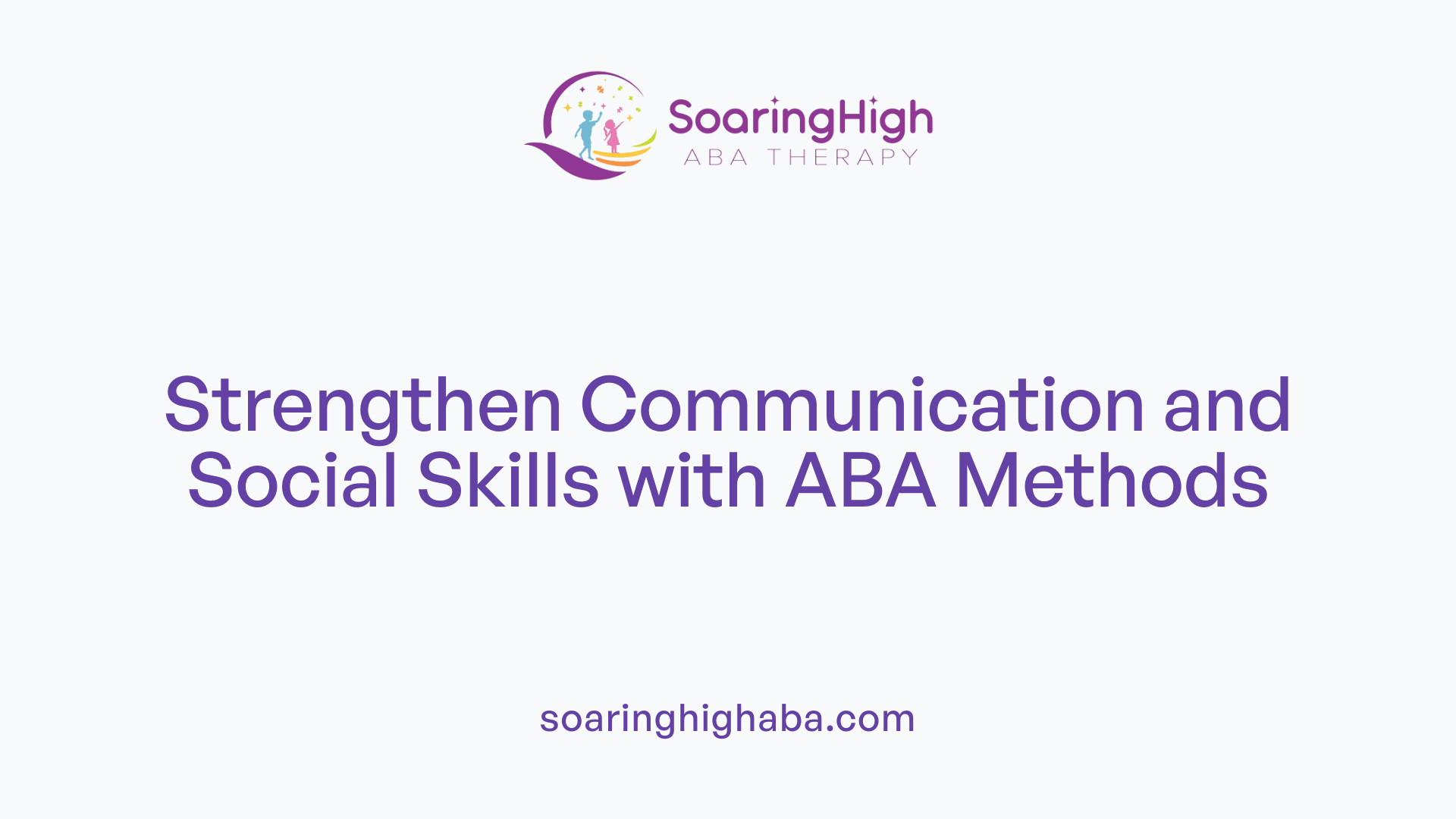
How do the mechanisms of ABA therapy enhance communication, social skills, and self-regulation to promote academic success?
ABA therapy plays a vital role in helping children develop essential skills for learning and social interaction. It systematically teaches communication through various forms such as gestures, words, and non-verbal cues, enabling children to express their needs clearly. Receptive language skills, like understanding instructions, are also improved within this framework.
Social skills are fostered through targeted techniques like modeling, chaining, and social stories. These methods assist children in grasping social cues, turn-taking, sharing, and understanding others’ emotions. For instance, social stories provide scenarios that help children learn appropriate behaviors in social settings.
A core aspect of ABA involves breaking down complex social and emotional skills into small, manageable steps. This approach allows children to master each component one at a time—be it recognizing facial expressions or initiating a conversation. This step-by-step process makes learning less overwhelming and more achievable.
Positive reinforcement is widely used to encourage the repetition and generalization of these skills across different environments, such as classrooms, playgrounds, or home settings. Rewards like praise, stickers, and privileges motivate children to practice new behaviors consistently.
Furthermore, ABA techniques support emotional regulation by teaching children strategies to manage anxiety, frustration, and other emotions. Visual supports and reinforcement strategies enhance independence, helping children stay focused and participate more fully in classroom activities.
By combining these strategies, ABA creates a personalized learning experience that boosts communication, promotes social inclusion, and encourages self-regulation. These improvements lay a strong foundation for academic success, allowing children to thrive in educational environments and beyond.
Applying ABA in Educational Environments
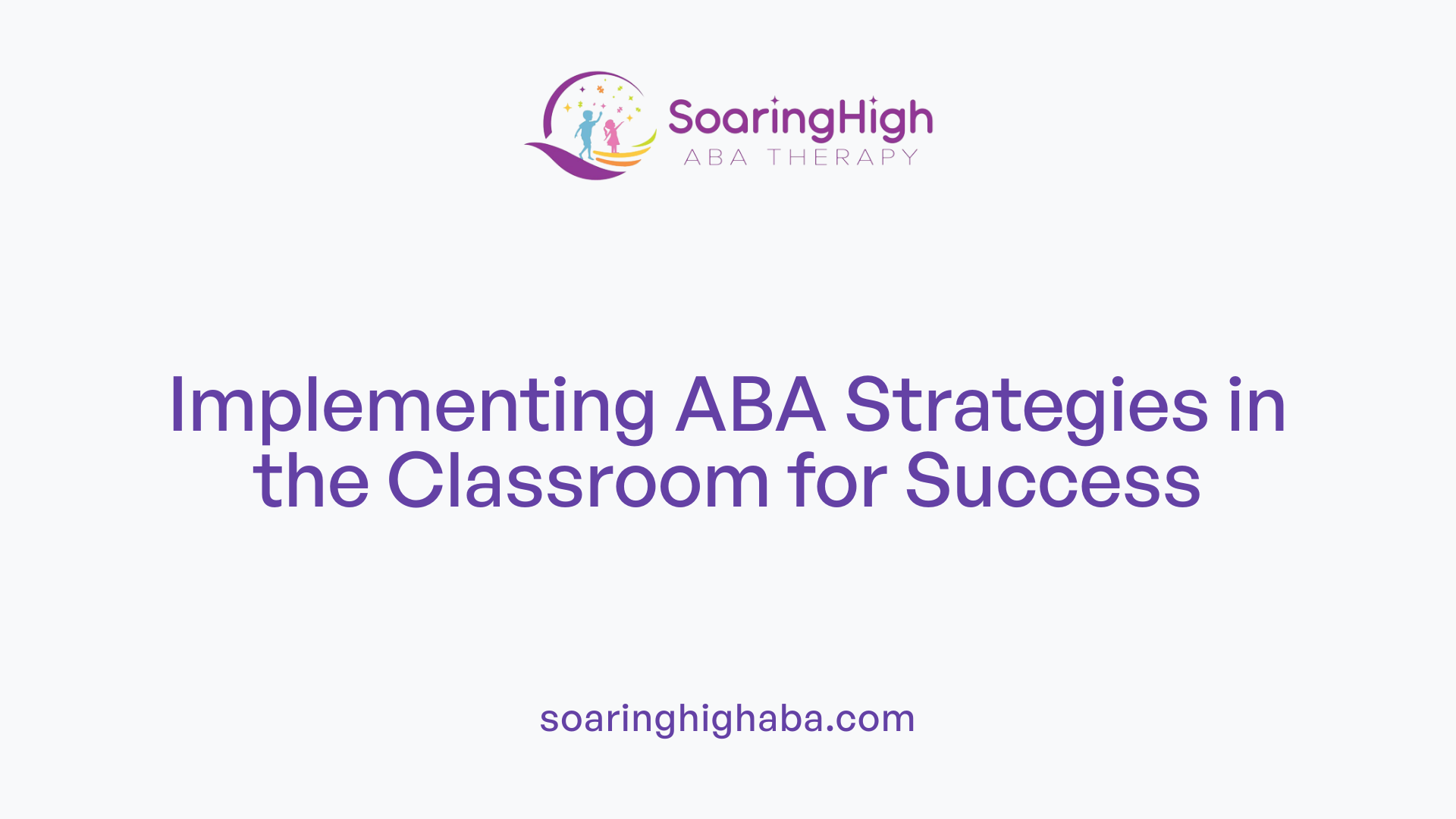
How are ABA principles and strategies applied in educational settings to promote learning and skill acquisition?
Applied Behavior Analysis (ABA) is widely integrated into schools to support children, especially those with autism spectrum disorder (ASD) and other behavioral challenges. Schools use structured teaching methods, such as Discrete Trial Training (DTT), to break down skills into small, manageable steps with immediate feedback and reinforcement.
Individualized Education Programs (IEPs) incorporate ABA strategies to address each child's specific needs. These plans include targeted goals for communication, social, academic, and adaptive skills. Teachers and therapists employ positive reinforcement by rewarding appropriate behaviors with praise, tokens, or privileges, which encourages repetition of desired actions.
Data collection is a cornerstone of ABA in classrooms. Educators regularly record progress and analyze data to make informed adjustments to teaching strategies, ensuring continual growth and success. This data-driven approach allows for precise measurement of improvements across skills such as receptive language, peer interaction, and self-care.
In addition, ABA techniques like task analysis simplify complex tasks (for example, tying shoelaces or solving math problems) into steps children can master gradually. Prompting and fading help guide students toward independence, gradually reducing support as skills become ingrained.
These strategies are often supported by policies like IDEA and PPM-140, emphasizing the importance of assessment, collaboration, and individualized interventions. The implementation of ABA in schools creates a consistent, supportive environment that enhances learning opportunities, fosters social inclusion, and promotes resilience and independence in students.
How does ABA support development of social and self-care skills?
ABA techniques teach children essential social behaviors such as sharing, turn-taking, and understanding social cues. These skills are fundamental for building friendships and positive peer interactions.
Self-care skills, including dressing, grooming, and feeding, are targeted through systematic teaching methods that promote independence, enabling children to participate actively in classroom routines and activities. Visual supports, reinforcement strategies, and behavioral interventions further facilitate these skills.
Creating supportive learning environments with ABA
Effective ABA implementation involves environmental assessments to optimize physical, social, and instructional settings. Collaboration among behavior analysts, teachers, and parents helps create tailored interventions that fit each child's aptitudes and challenges.
Enhanced staffing, such as behavior specialists, provides additional support to ensure the consistent delivery of ABA strategies. Moreover, training teachers and staff in ABA techniques equips them to manage classroom behaviors effectively while fostering a positive, inclusive atmosphere.
Monitoring progress through data collection and analysis
Ongoing data collection allows educators to track a child's development across various domains. This process helps identify areas needing adjustment and ensures interventions remain relevant and effective.
Overall, integrating ABA principles into education creates an environment that values individual strengths, promotes adaptive and social skills, and supports academic achievement for all students.
ABA’s Role in School Readiness and Academic Preparation
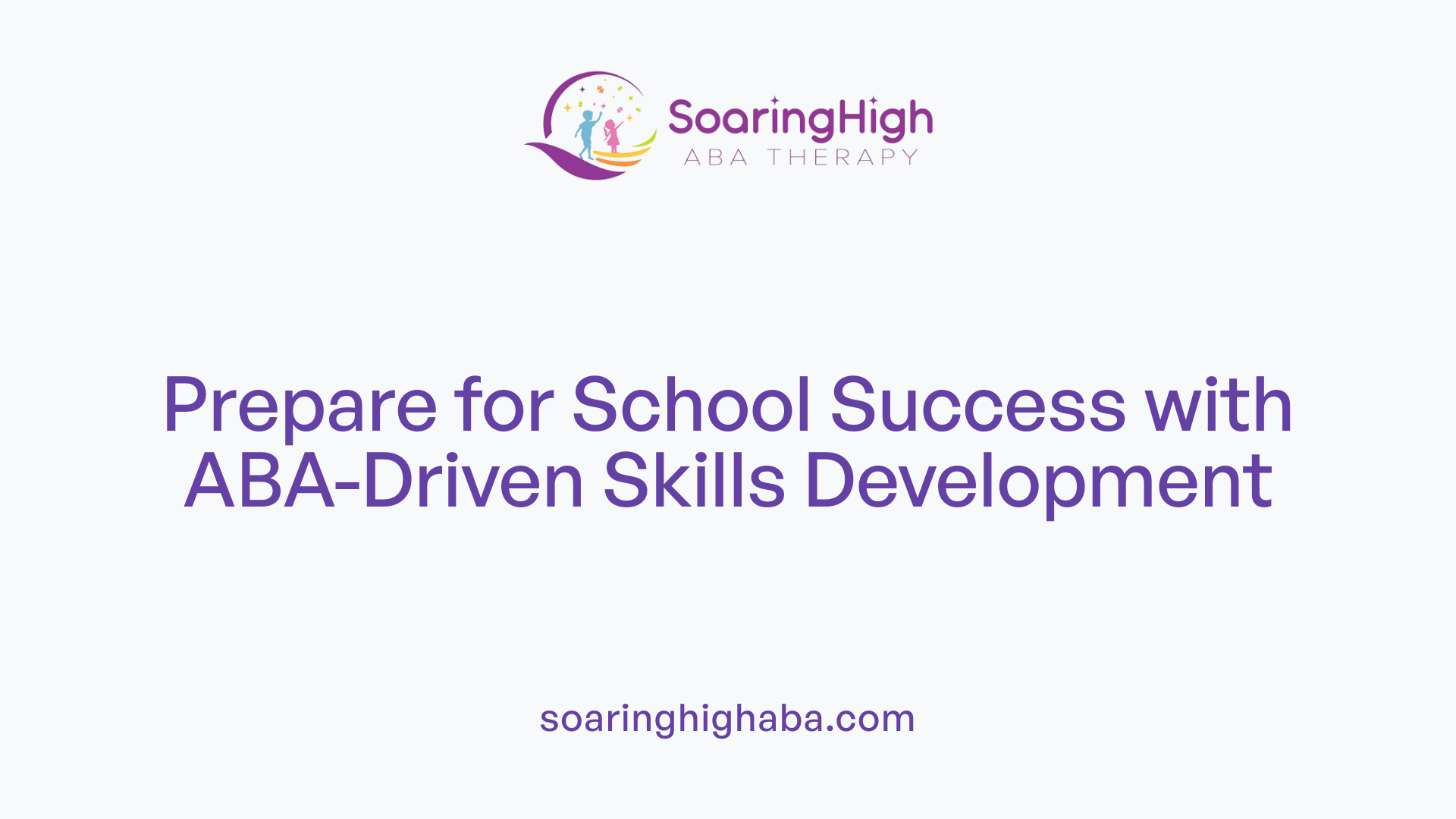
How does ABA therapy support the development of communication, social, and self-regulation skills?
ABA therapy targets vital skills necessary for academic success. It enhances communication abilities such as expressive and receptive language, helping children understand instructions and express their needs clearly.
Social skills are also emphasized, teaching behaviors like turn-taking, sharing, and recognizing social cues. These skills are fundamental for positive peer interactions and collaborative classroom behavior.
Furthermore, ABA supports self-regulation by teaching children to manage their emotions, reduce anxiety and frustration, and develop independence in managing daily routines.
What strategies are used to facilitate learning and generalize skills?
Children learn through structured methods like Discrete Trial Training (DTT) and Natural Environment Teaching (NET). DTT offers a systematic way to break skills into small, teachable steps, providing immediate feedback and reinforcement.
NET teaches skills in real-life situations, encouraging children to generalize behaviors beyond structured sessions. Visual supports, routines, and social stories also help reinforce skills and create predictable environments, easing children into new activities and settings.
How does ABA address behavioral challenges and promote independence?
By carefully observing and analyzing behaviors, ABA identifies underlying causes of disruptive actions. It then implements targeted strategies such as positive reinforcement and behavior intervention plans to reduce challenging behaviors.
ABA also teaches functional communication skills, offering children alternative ways to express their needs.
Promoting independence involves teaching self-care skills like dressing, grooming, and feeding through task analysis and fading prompts, helping children participate actively in classroom routines.
How are transitions into school environments supported?
ABA strategy includes using social stories, visual schedules, and structured routines. These tools prepare children for upcoming events, reduce anxiety, and promote smooth transitions.
Behavior support plans also focus on managing transition-related behaviors, helping children adapt more easily to changing activities and environments.
What is the importance of collaboration among families, educators, and therapists?
Effective school readiness programs depend on a team approach. BCBAs, teachers, and parents work together to ensure consistency across settings.
Regular communication, data sharing, and joint planning allow tailored interventions that address each child's unique needs.
This collaboration guarantees that skills acquired in therapy are reinforced in the classroom, leading to more meaningful progress.
| Aspect | Techniques and Strategies | Outcomes |
|---|---|---|
| Communication Skills | Language interventions, visual supports, social stories | Better understanding and expression in classroom |
| Social Interaction Skills | Social skills training, peer modeling | Improved peer relationships and cooperation |
| Self-Regulation | Emotional regulation strategies, routines, visual timers | Increased independence, reduced anxiety |
| Behavioral Management | Functional behavior assessment, reinforcement, behavior plans | Reduced disruptive behaviors, increased focus |
| Transitions and Routines | Visual schedules, social stories, structured routines | Smoother transitions and reduced stress |
ABA's comprehensive approach supports children in acquiring the skills necessary for successful school experiences. It encourages independence, enhances emotional and social competence, and prepares children to participate confidently in classroom activities.
The Effectiveness and Benefits of ABA in Academic and Developmental Outcomes
How does ABA therapy help children learn complex skills in manageable steps?
ABA uses techniques such as Task Analysis and Discrete Trial Training (DTT) to break down complex academic and daily living skills into smaller, more manageable components. This structured approach allows children to master foundational elements like letter recognition, counting, or dressing by focusing on one step at a time. Immediate feedback and positive reinforcement help children stay engaged and motivated throughout the learning process.
In what ways does ABA promote independence and self-regulation?
ABA emphasizes teaching self-care routines like dressing, grooming, and feeding, which foster independence. Strategies such as visual supports and reinforcement encourage children to manage their routines more autonomously. Additionally, ABA helps children develop self-regulation skills, like managing frustration and anxiety, by teaching them how to use visual cues, coping strategies, and reinforcement systems to stay calm and focused.
How does ABA reduce disruptive behaviors to improve focus and learning?
ABA employs functional behavior assessments (FBA) to identify the causes of challenging behaviors. Through behavior intervention plans, techniques like behavior shaping and replacement behaviors are used to decrease disruptive actions. Reinforcement of positive behaviors and visual supports help create a more stable learning environment where children can better concentrate and participate actively.
How does ABA support social engagement and peer interactions?
ABA includes social skills training, which teaches children appropriate behaviors such as turn-taking, sharing, and understanding social cues. These skills are vital for forming friendships and collaborating with classmates. Using incidental teaching and natural environment strategies, children learn to generalize social skills across different settings, improving overall peer relationships.
What scientific evidence supports ABA’s effectiveness?
Numerous studies and meta-analyses demonstrate that ABA is a scientifically supported approach for improving skills in children with ASD. It has consistently shown to enhance communication, reduce problematic behaviors, and foster academic and social success. ABA's individualized interventions and data-driven methodology ensure measurable progress, making it a reliable tool for supporting educational and developmental goals.
| Skill Focus | Techniques Used | Outcomes | Additional Notes |
|---|---|---|---|
| Academic Skills | DTT, Task Analysis, Data Collection | Mastery of reading, writing, math | Supports learning in a step-by-step manner |
| Self-Care and Independence | Visual supports, reinforcement, prompting | Improved daily living skills | Promotes autonomy in classroom routines |
| Communication Skills | Incidental teaching, social skills training | Better expressive and receptive language | Facilitates classroom participation |
| Behavior Management | Functional Behavior Assessment, reinforcement | Reduced disruptive behaviors | Creates positive learning environments |
In summary, ABA provides a comprehensive framework for supporting children’s academic growth, social-emotional development, and independence. Its structured, evidence-based techniques are proven to improve both learning and behavior, making it an invaluable resource in educational settings.
Fostering Long-Term Academic Success Through ABA
In summary, ABA therapy offers a comprehensive, scientifically supported framework that plays a crucial role in developing crucial academic skills in children with ASD. By employing targeted strategies to enhance communication, social interaction, self-regulation, and independence, ABA prepares children for successful participation in school environments. Its tailored, data-driven approach allows for continuous progress monitoring and adjustment, ensuring that each child’s unique needs are met. The collaborative effort of educators, therapists, and families underpins its effectiveness, fostering a supportive learning atmosphere that not only facilitates immediate educational success but also promotes ongoing growth and development. Ultimately, ABA remains a vital tool for empowering children with ASD to reach their full academic potential and thrive in school and beyond.
References
- How ABA Therapy Boosts School Readiness
- How ABA Therapy Prepares Children for School Success
- ABA Therapy in School | Brady Behavior Analysis
- How ABA Can Support Academic Skills: A Comprehensive ...
- Enhancing Educational Services Through Applied ...
- The effectiveness of applied behavior analysis program ...
- Boosting Social Skills and Communication Through ABA ...
- ABA Therapy for Social Skills: Building Connections
- ABA Therapy for Social Skills Development in Autism
- How ABA Therapy Helps With Social Skills






































